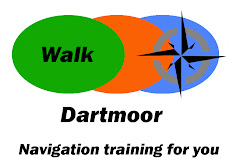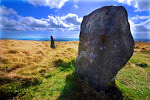Much is written by the various news media on the event this year, as HRH The Duke of Edinburgh came to visit in celebration of the 50th anniversary. So I wont try and emulate the BBC with a long story of the history of Ten Tors etc.
The organisation for the event starts much earlier in the year, under the 'umbrella' of 43 Wessex Brigade, who take responsibilty for the event. However, this can only be achieved with the input and participation of various 'working partners' to bring about a successful event on the second weekend of May each year.
One of those 'working partners' is the team of scrutineers, who have the role of checking that the 400 participating teams, consisting of 2,400 youngsters, are carrying the mandatory required equipment for the challenge. And to walk the moor in small teams during the event, to provide an additional mobile monitoring service to keep an eye out that the 'rules' are being adhered to.
Rules, what rules? Many may say there are just too many rules in life, but for an event like this there need to be rules. The rules are what make it a challenge, and in accepting the challenge, one likewise accepts the rules; or so it would seem. One part of the challenge which we accpet when entering a team for ten tors is that of the clothing and equipment. Many lightweight and SUL hikers would cringe, or possibly cry if they saw the list of clothing and equipment. I did the 55 mile ten tors challenge twice as a young lad, I dont think I could do it again today carrying everything that the youngsters must carry. You see that is the broad distinction in equipment carriage: that of carrying knowledge with light kit, or carrying the kit because you dont have the knowledge. I can get away with lightweight equipment because I have over 3 decades of experience to fall back on, whereas the youngsters taking part in the challenge may have had just 3 months of training before the start of the event.
Here is a good example of why 'rules is rules' and why they need to be followed:
Water: 2 litres - This can be a platypus or hard bottle, although a combination of the two would be recommended to manage 'on the move' sterilisation of stream water while drinking from the platypus (or other hard bottle)
But one team member presented this as a 2 litre water bottle:
In fact very few of that team had 'proper' water bottles, with the team manager defending the actions becasue of what he had been allowed to carry on the OMM. Different competitors, different skills, differentt challenge, different rules.
Anyway, back to where I was going with this post:
The team of scrutineers arent there to make life hard, they are their to ensure that the rules of the challenege are met equally and consistently by every team that enters.
Well done to to all of the youngsters that entered this years event, and good luck with next years event.
And for the benefit of the scrutineers who were unable to receive my earlier email, here are your team photos, just click to expand and then save to desktop:



























